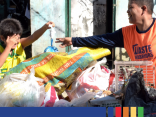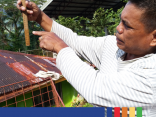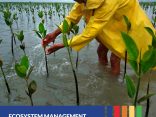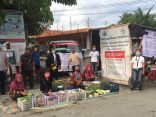(This report was first published online by Bicol Mail on 16 October 2014. Original version is available in this link.)
By Juan Escandor Jr.
Bicol Mail
NAGA CITY—More than a hundred representatives from municipalities, non-government organizations, and government agencies from all over the country are sharing their experiences and disaster risk reduction (DRR) plans here to build resilient communities in the face of climate change and frequency of weather-induced calamities.
In photo: Participants of "Ugnayan at Bahaginan" pose for a photo after their field visit to the mangrove plantation in Brgy. Cagsao, Calabanga, Camarines Sur. (Jigs Tenorio / ACCORD)





